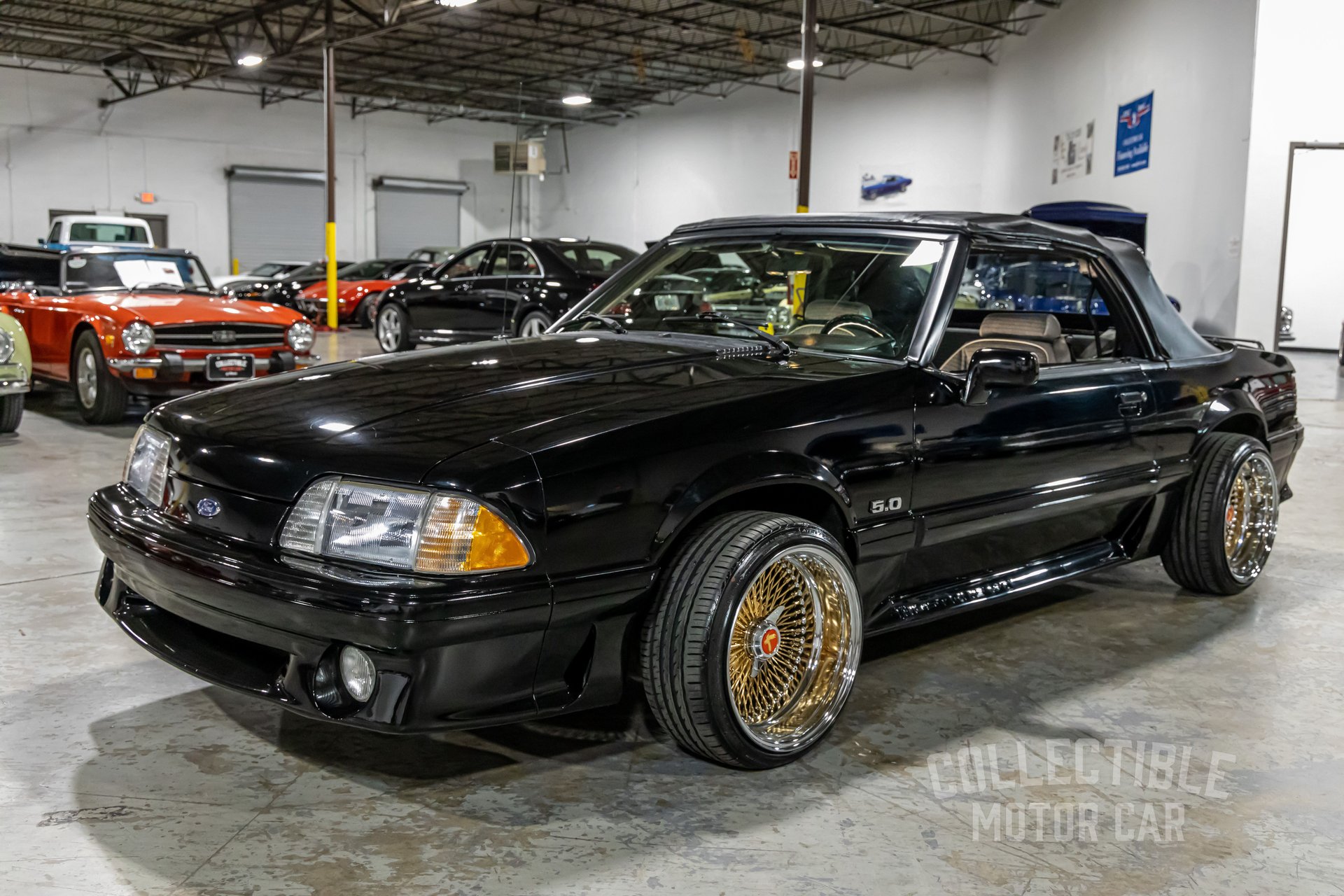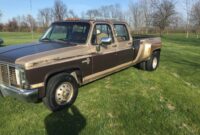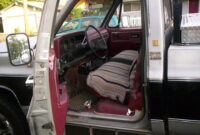1990 Ford Pickup Trucks For Sale: A Comprehensive Buyer’s Guide pickup.truckstrend.com
The year 1990 might seem like a distant memory for many, but for a dedicated community of truck enthusiasts and pragmatic individuals, it represents a sweet spot in automotive history. The 1990 Ford F-Series pickup truck, a stalwart of American engineering, continues to capture attention on the used market. These trucks, part of Ford’s highly successful eighth generation (1987-1991), are more than just old vehicles; they are testament to durability, simplicity, and a bygone era of robust utility. Whether you’re a first-time classic truck buyer, a seasoned restorer, or simply in need of a reliable workhorse without breaking the bank, understanding the nuances of finding and purchasing a 1990 Ford pickup is crucial. This guide aims to provide a detailed roadmap for anyone looking to acquire one of these enduring machines.
The Enduring Appeal of the 1990 F-Series
1990 Ford Pickup Trucks For Sale: A Comprehensive Buyer’s Guide
Ford’s F-Series has been America’s best-selling truck for decades, and the 1990 model year played a significant role in solidifying that legacy. These trucks were built with a focus on ruggedness and functionality, eschewing many of the complex electronics and luxury features found in modern pickups. This simplicity is precisely what makes them so appealing today. Their straightforward mechanical design means easier diagnosis and repair, often achievable by the home mechanic with basic tools.
The 1990 F-Series boasts a classic, boxy aesthetic that has aged remarkably well, appealing to those who appreciate a no-nonsense, utilitarian look. They were designed to work, and their reputation for reliability in tough conditions persists. Many have served as farm trucks, construction vehicles, or daily drivers for decades, proving their inherent durability. For a buyer on a budget, a 1990 F-Series offers substantial capability for a fraction of the cost of a new truck, making it an excellent value proposition for work, hauling, or even as a project vehicle.
Understanding the 1990 F-Series Lineup
Before diving into the market, it’s essential to understand the various configurations offered in 1990. This knowledge will help you identify the right truck for your specific needs.
-
Models:
- F-150: The half-ton, light-duty pickup, ideal for general hauling, daily driving, and recreational use. Most common and versatile.
- F-250: The three-quarter-ton, heavy-duty pickup, designed for greater payloads and towing capacity. Features stronger suspension and often larger engines.
- F-350: The one-ton, super-duty pickup, built for maximum payload and towing. Often available with dual rear wheels (dually) for increased stability and capacity.

-
Body Styles:
- Regular Cab: Standard two-door cab with a single row of seating. Available with short (approx. 6.5 ft) or long (approx. 8 ft) beds.
- SuperCab (Extended Cab): Features a smaller rear seating area accessible via a single, larger door on each side (no separate rear doors). Often paired with a long bed.
- Crew Cab: While less common for 1990 and typically found on F-250/F-350 models, some four-door Crew Cab configurations exist, offering full rear seating. These are highly sought after.

-
Engine Options: The 1990 F-Series offered a robust array of engines, each with its own characteristics:
- Gasoline:
- 4.9L (300 cu in) Inline-Six: Legendary for its bulletproof reliability, torquey nature, and surprising fuel efficiency for a large truck engine. Often considered the most durable option.
- 5.0L (302 cu in) V8: A venerable small-block V8, offering a good balance of power and efficiency. Common in F-150s.
- 5.8L (351W cu in) V8: A larger small-block, providing more power and torque than the 5.0L, often found in heavier F-150s and F-250s.
- 7.5L (460 cu in) V8: The largest gasoline V8, a powerhouse designed for heavy hauling and towing, especially in F-250s and F-350s. Expect lower fuel economy.
- Diesel:
- 7.3L IDI V8 (International Diesel): A naturally aspirated (non-turbocharged) diesel engine known for its incredible longevity and simplicity. While not as powerful as later Power Strokes, it’s a reliable workhorse for those seeking diesel durability.
- Gasoline:
-
Transmissions:
- Manual: 4-speed (older models, less common for 1990), 5-speed (Mazda M5OD in light-duty, ZF S5-420 in heavy-duty).
- Automatic: 3-speed (C6, robust but less efficient), 4-speed with overdrive (AOD for lighter duties, E4OD for heavy-duty applications).
/GettyImages-50807589-5c7c30df46e0fb0001a983d0.jpg)
What to Look For When Buying a 1990 Ford Pickup
Purchasing a vehicle that’s over three decades old requires a thorough inspection. Patience and attention to detail will save you headaches and money down the road.
-
Rust: This is the biggest enemy of older trucks. Inspect critical areas:
- Cab Corners and Rocker Panels: Common rust spots due to water and salt accumulation.
- Wheel Wells and Fenders: Especially the rear wheel wells.
- Bed: Look for rust through the bed floor, especially under bed liners. Tailgates are also prone.
- Frame: Crucial for structural integrity. Check for significant pitting, cracks, or repairs. Surface rust is common and manageable, but extensive rot is a deal-breaker.
- Floorboards: Lift floor mats and check for soft spots.
-
Engine Condition:
- Cold Start: Listen for excessive smoke (blue for oil, white for coolant, black for rich fuel mix), strange noises (knocks, ticks, squeals).
- Leaks: Check under the truck for oil, coolant, or transmission fluid leaks.
- Fluids: Check oil and coolant levels and condition. Milky oil indicates coolant in the oil; oily coolant indicates oil in the coolant.
- Maintenance: Ask for maintenance records. A well-maintained engine is key.
-
Transmission & Drivetrain:
- Automatics: Check fluid level and color. Test all gears, noting smooth shifts. Listen for clunks or grinding.
- Manuals: Test clutch engagement, smooth shifting, and listen for grinding.
- 4×4 System (if applicable): Engage 4-high and 4-low. Listen for unusual noises. Check transfer case fluid.
-
Suspension & Steering:
- Shocks/Springs: Look for leaks on shocks, sagging suspension.
- Steering Play: Excessive play in the steering wheel indicates worn steering box, tie rods, or ball joints.
- Tires: Check wear pattern for alignment issues.
-
Brakes:
- Pedal Feel: Should be firm, not spongy.
- Pulsation: Pulsating pedal indicates warped rotors.
- Leaks: Check brake lines and calipers for leaks.
-
Electrical System:
- Test all lights (headlights, tail lights, turn signals, brake lights), gauges, horn, wipers, radio, and power accessories (windows, locks, mirrors if equipped).
-
Interior:
- Seats: Check for tears, foam collapse.
- Dash: Look for cracks (common due to sun exposure).
- Headliner: Sagging or torn.
- HVAC: Test heating and air conditioning functionality.
-
Title & History:
- Always verify the VIN on the title matches the vehicle.
- Check for a clear title.
- Ask about accident history. While CarFax reports might be less detailed for older vehicles, they can still provide some insights.
Where to Find 1990 Ford Pickup Trucks For Sale
The market for these trucks is robust, but finding the right one requires looking in the right places:
- Online Marketplaces:
- Craigslist & Facebook Marketplace: Excellent for local finds, often from private sellers. Be prepared to travel and inspect thoroughly.
- eBay Motors: Wider geographical reach, often more detailed listings, but shipping costs can add up.
- AutoTrader Classics / ClassicCars.com: Dedicated classic vehicle sites, often featuring higher-quality or restored examples.
- Specialized Forums & Clubs: Ford truck forums (e.g., FTE – Ford-Trucks.com, OBS Ford groups on Facebook) are great places to find trucks from enthusiasts who often maintain them well.
- Local Classifieds & Independent Dealers: Keep an eye on local newspapers, community boards, and small, independent used car lots.
- Auctions: Local auto auctions can yield hidden gems, but require quick decision-making and a good eye for detail. Classic car auctions might feature meticulously restored examples.
Tips for a Successful Purchase
- Set a Realistic Budget: Beyond the purchase price, factor in potential immediate repairs, maintenance, registration, and insurance. Older trucks will always need some TLC.
- Pre-Purchase Inspection (PPI): If you’re not mechanically inclined, or even if you are, consider hiring a trusted mechanic to perform a PPI. It’s a small investment that can save you from a costly mistake.
- Test Drive Extensively: Don’t just drive around the block. Take it on the highway, over bumps, and test all functions.
- Negotiate: Always negotiate the price. Research similar listings to understand the market value.
- Verify Documentation: Ensure the seller has a clear title in their name and that all paperwork is in order.
Potential Challenges and Solutions
While these trucks are durable, they’re old, and challenges will arise.
- Rust Repair: Extensive rust can be costly to repair professionally. For minor rust, DIY patch panels and rust converters can work. For structural rust, professional welding is essential.
- Finding Specific Parts: While many common parts are still readily available new (engine components, brake parts, suspension), specific trim pieces or interior components might require hunting through junkyards, online forums, or specialty aftermarket suppliers.
- Fuel Economy: These trucks, especially those with V8s or the 460, are not fuel-efficient by modern standards. Accept it, or consider a diesel swap (complex and costly) or meticulous tuning for optimal performance.
- Modern Comforts: Lack of power windows/locks, cruise control, or modern infotainment can be an adjustment. Aftermarket upgrades are available for many of these features.
- Age-Related Wear: Rubber components (hoses, belts, bushings) will degrade over time regardless of mileage. Be prepared to replace these preventatively.
Price Guide: 1990 Ford Pickup Trucks For Sale
Prices for 1990 Ford pickups vary significantly based on condition, mileage, model (F-150, F-250, F-350), engine, transmission, 2WD/4WD, and geographical location. The table below provides a general range:
| Condition Category | Estimated Price Range (USD) | Key Factors Affecting Price |
|---|---|---|
| Poor / Parts Truck | $500 – $2,000 | Significant rust, non-running or major mechanical issues, incomplete. Good for parts or a full restoration project. |
| Fair / Runner | $2,000 – $5,000 | Runs and drives, but needs significant work (e.g., rust repair, mechanical overhaul, interior refresh). May have high mileage. |
| Good / Solid Driver | $5,000 – $10,000 | Minimal rust, mechanically sound, reliable daily driver or work truck. May have minor cosmetic flaws or higher mileage. |
| Excellent / Restored | $10,000 – $25,000+ | Near-flawless body and paint, fully restored or meticulously maintained original condition, low mileage (if original). Rare to find in this state for a 1990 model. |
Note: These are general estimates. Rare configurations (e.g., Crew Cab F-350, pristine low-mileage examples) can command higher prices. Prices are also subject to regional market demand.
Frequently Asked Questions (FAQ)
Q: Are 1990 Ford pickups reliable?
A: Yes, generally very reliable due to their simple, robust mechanical design. The 4.9L I6 and 7.3L IDI diesel engines are particularly known for their longevity. However, like any old vehicle, reliability depends heavily on past maintenance.
Q: What are the best engines to look for in a 1990 Ford F-Series?
A: For pure durability and workhorse capability, the 4.9L (300ci) inline-six is hard to beat. For more power, the 5.8L (351W) V8 offers a good balance. The 7.3L IDI diesel is excellent for heavy towing and extreme longevity, though it’s not a speed demon.
Q: Are parts readily available for 1990 Ford F-Series trucks?
A: For most common wear items (brakes, suspension, engine components, basic electrical), parts are widely available new from auto parts stores. Body panels and specific interior trim pieces may require more searching, often found used or from specialty suppliers.
Q: What kind of fuel economy can I expect from a 1990 Ford pickup?
A: Don’t expect modern fuel efficiency. A 4.9L I6 might get 12-16 MPG, while V8s and the 460 can be in the 8-12 MPG range. The 7.3L IDI diesel might achieve 14-18 MPG. These are rough estimates and vary greatly with driving conditions and maintenance.
Q: Can a 1990 Ford pickup be used as a daily driver?
A: Absolutely, many people use them as daily drivers. However, be prepared for a less refined ride, fewer creature comforts, and higher fuel costs compared to a modern vehicle. Regular maintenance is key for daily driving.
Q: What’s the typical lifespan of a 1990 Ford F-Series?
A: With proper maintenance and rust prevention, these trucks can easily last 300,000 miles or more. Many examples are still on the road with even higher mileage.
Q: Is it worth restoring a 1990 Ford pickup?
A: For sentimental value, specific utility needs, or as a hobby, yes. Financially, a full frame-off restoration can often exceed the truck’s market value, so it’s usually a passion project rather than an investment in monetary return, unless it’s a very rare configuration.
Conclusion
The 1990 Ford pickup truck stands as a testament to a bygone era of straightforward, robust vehicle manufacturing. For those seeking a reliable workhorse, a nostalgic project, or simply a truck with character, these F-Series models offer incredible value and enduring capability. By understanding the various configurations, knowing what to inspect thoroughly, and employing smart buying strategies, you can find a 1990 Ford pickup that will serve you faithfully for years to come. While they demand a certain level of commitment in terms of maintenance and perhaps a few compromises on modern amenities, the rewards of owning such a classic, dependable machine are truly unique.



